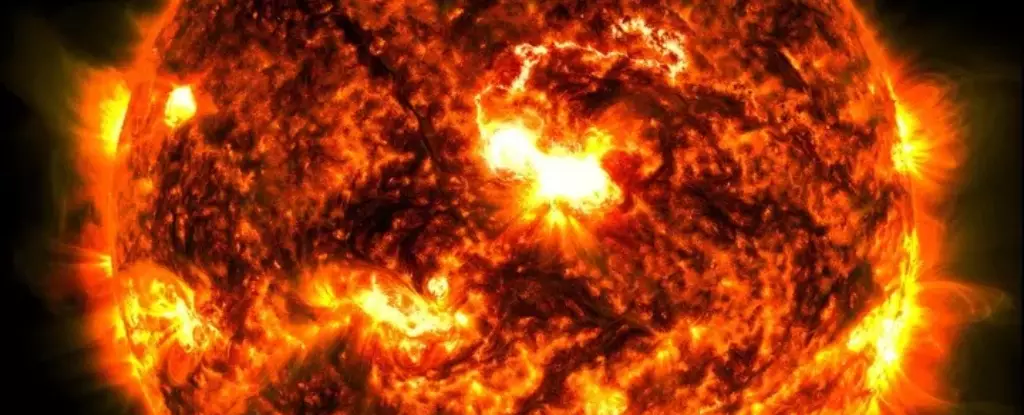Recent predictions made by U.S. forecasters indicate that a significant coronal mass ejection (CME) from the Sun is projected to reach Earth, with the potential to trigger awe-inspiring auroras in regions as far south as Alabama. This event is particularly noteworthy because it aligns with the Sun’s 11-year cycle, a period characterized by increased solar activity. As such phenomena become more frequent, it’s crucial to explore not just their immediate effects, but also what they mean in the grander context of solar and planetary dynamics.
In the past, similarly intense solar activity has resulted in geomagnetic storms that sparked vivid displays of lights across wide geographical bounds, extending the typical auroral zones into more populated areas. For instance, the past May saw some of the fiercest geomagnetic storms in two decades, leading to breathtaking celestial displays that even reached regions far beyond the Arctic Circle. The anticipation of this recent CME has generated excitement and concern alike, drawing attention to the delicate balance between the Earth’s magnetic field and solar explosions.
A coronal mass ejection is essentially a massive burst of solar wind and magnetic fields rising above the solar corona or being released into space. These eruptions can travel at astronomical speeds, with recent forecasts estimating the CME moving at approximately 2.5 million miles per hour. When such plasma storms collide with Earth’s magnetosphere, they can have diverse consequences. NASA and the National Oceanic and Atmospheric Administration (NOAA) have indicated that we are now under a level 4 geomagnetic storm watch, suggesting a heightened state of alert as we await the CME’s landfall.
The implications for technology and infrastructure due to these solar events cannot be overstated. Satellites, which play an integral role in modern communication, weather forecasting, and navigation, are particularly vulnerable to geomagnetic storms. The storms can interfere with satellite operations, disrupt radio signals, and hinder GPS accuracy, echoing past events where widespread outages have affected daily life and commercial activities.
Historical records of geomagnetic storms reveal their potential to impact societies significantly. The infamous “Halloween Storms” of 2003 are a prime example, where solar eruptions caused extensive outages and damages across Europe and Africa. These events serve as reminders that disruptions can escalate quickly, prompting emergency preparations at both government and private sector levels. In light of this upcoming CME, FEMA has already been alerted to assess potential risks and mitigate potential issues as they arise.
The interplay between solar activity and terrestrial consequences presents a fascinating picture, unveiling the tremendous power of the cosmos. As we look to the skies, the knowledge that around 5,000 satellites may require orbital adjustments due to solar-induced atmospheric disturbances underscores the far-reaching implications of these phenomena.
For enthusiasts and casual observers alike, the impending CME offers the possibility of witnessing one of nature’s most stunning light shows: the auroras. While typically confined to polar regions, forecast models suggest that the expected storm could push auroral displays as far south as parts of Northern California and Alabama. The science behind these shimmering lights is complex, rooted in the interactions between charged particles released from the sun and the Earth’s magnetic field.
Experts recommend that individuals curious about capturing this spectacle should seek locations far removed from urban light pollution, ideally in areas where skies are darkest. Interestingly, today’s digital technology plays a crucial role in aurora viewing. Cameras and smartphones can often detect and capture lights that might not be visible to the naked eye, providing a unique opportunity for all to experience this celestial wonder.
The event of the impending CME highlights not only our planet’s vulnerability to solar phenomena but also the interplay between natural occurrences and human technology. As we eagerly await the striking auroral displays, it’s essential to recognize the broader implications of solar activity on our modern world, paving the way for a deeper understanding of the universe’s influences on our daily lives. By fostering awareness and preparedness, we can harness the beauty of these cosmic phenomena while minimizing their potential disruptions.


Leave a Reply